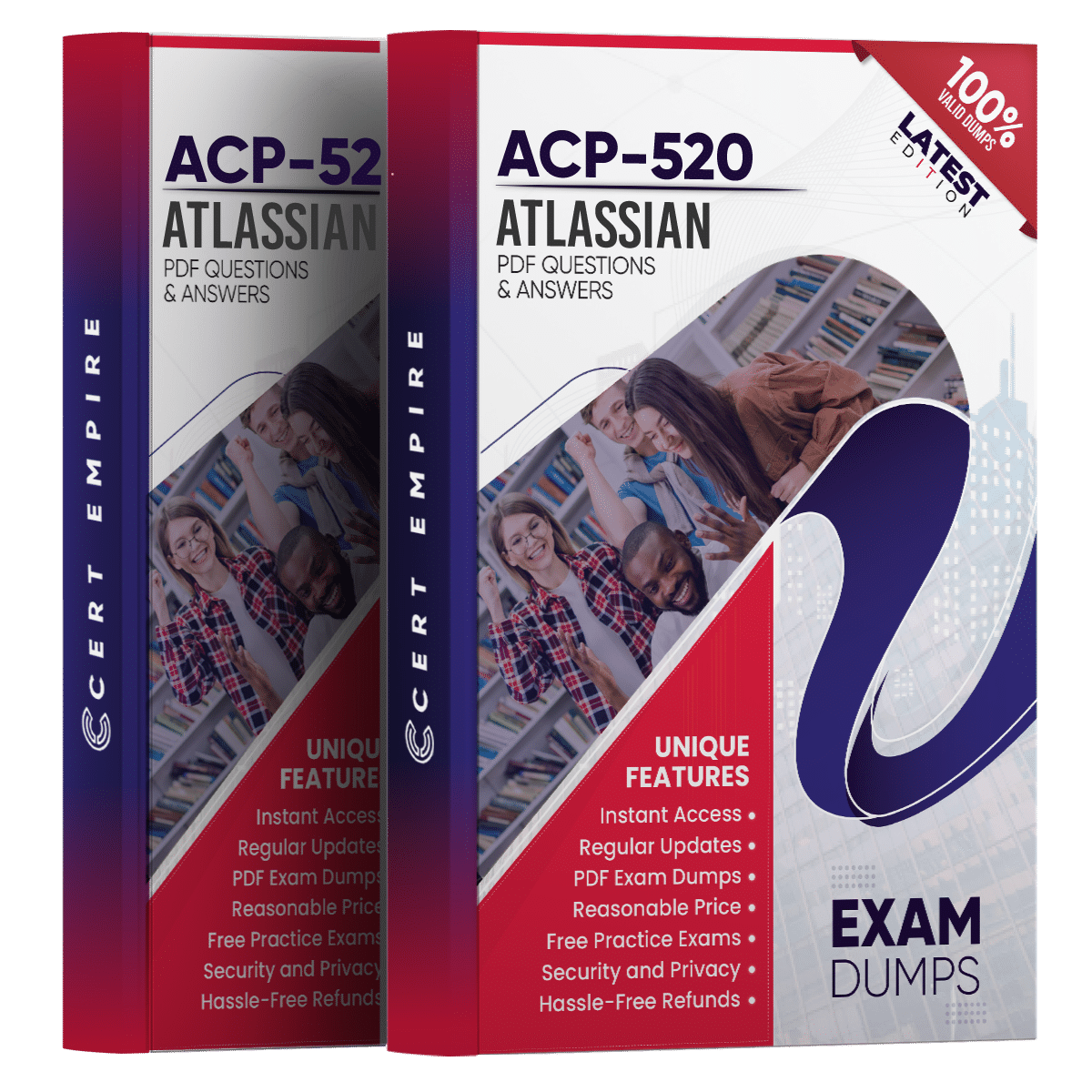About ACP-520 Exam
Establishing Cloud Admin Authority with Atlassian ACP-520 Certification
The ACP-520 certification from Atlassian is a professional-level credential that speaks directly to modern enterprise cloud administration. In 2025, as more teams shift toward fully cloud-based infrastructures, the demand for certified Atlassian Cloud Organization Admins continues to rise. This certification isn’t just a logo you slap on a profile. It marks your readiness to handle core infrastructure tasks that shape how organizations operate within Atlassian Cloud environments.
Being issued by Atlassian itself, this certification confirms that you’re capable of managing large-scale Atlassian orgs, not just individual products like Jira or Confluence. The ACP-520 aligns perfectly with companies that rely on tight user governance, security enforcement, and centralized control. It fits snugly in today’s fast-moving DevOps and SaaS-heavy teams.
Who This Certification Makes Sense For
The ACP-520 isn’t for folks just starting out. It leans heavily toward individuals already working with cloud systems, SaaS integrations, and enterprise-level user management. You’ll typically see candidates coming from roles such as:
- System administrators managing Atlassian Cloud tools
- Enterprise Atlassian experts who manage permissions and access
- Security-focused IT professionals running policy compliance
- DevOps engineers maintaining platform efficiency across tools
The cert becomes especially relevant if you’re the go-to person for handling Atlassian Access, SCIM setups, or SAML configurations. If you’re responsible for setting security policies or managing identities across the org, this credential reflects your skill set accurately.
What You Learn Along the Way
Preparing for the ACP-520 is more than a technical checklist. It sharpens how you think about scalability, compliance, and operational structure. Here are some of the core skills you’ll come across:
- Controlling user access across all products from a centralized org admin console
- Auditing activity logs and understanding how to use them for compliance checks
- Applying conditional access policies and configuring authentication methods
- Managing external identity providers like Azure AD
- Setting up Atlassian Access and troubleshooting syncing issues
Each domain you study builds on the last, and by the end, your admin logic and troubleshooting approach improve noticeably.
Certification That Opens Career Routes
Having an Atlassian badge like the ACP-520 speaks directly to hiring managers who need proven hands behind the wheel. In teams that rely heavily on cloud-hosted services, there’s real value in verifiable cloud control skills. It’s a qualification that fits into both traditional IT setups and newer DevOps pipelines.
Whether you’re looking to switch roles internally or aiming to step into a new job market, the cert gives you leverage. Roles you’ll typically qualify for include:
- Atlassian Cloud Admin
- Platform Operations Lead
- SaaS Access Manager
- Cloud Systems Engineer
- Enterprise IT Admin
Employers scanning for candidates with Atlassian experience tend to prioritize certified professionals over non-certified ones, especially when managing enterprise-level access and permissions is involved.
Salary Expectations for Certified Admins
Professionals who hold ACP-520 certification typically land in well-paying technical roles. Below is a breakdown of median salary ranges for roles associated with this cert:
|
Job Title |
Estimated Salary Range (USD) |
|
Atlassian Cloud Administrator |
$95,000 – $115,000 |
|
SaaS Operations Engineer |
$105,000 – $125,000 |
|
Cloud Identity Access Manager |
$110,000 – $135,000 |
|
DevOps Platform Admin (with ACP) |
$115,000 – $140,000 |
These roles often lead to long-term professional growth, especially in companies that rely on Atlassian across multiple departments or regions.
Getting Familiar With the Exam Blueprint
Understanding the ACP-520 structure makes preparation more focused and less stressful. Atlassian breaks the test down into several functional domains, each mapped to real-world admin responsibilities. Here’s a quick snapshot of how the questions are distributed:
|
Domain |
Weight |
|
User and Group Management |
25% |
|
Security Policies and Authentication |
20% |
|
Site and Product Settings |
15% |
|
Atlassian Access and Directory Config |
25% |
|
Monitoring, Logs, and Org Setup |
15% |
The test leans on scenario-style questions. You won’t just be asked to list steps. Instead, you’ll evaluate setups, troubleshoot conflicts, and choose the most logical response based on best practices.
Details You Should Know About the Format
There’s nothing too surprising in the delivery format, but you’ll want to be familiar with the structure before exam day:
- Total Questions: 60
- Question Type: Multiple-choice, all scenario-based
- Time Limit: 180 minutes
- Delivery Method: Remote online (proctored)
- Access to Notes or Books: Not allowed
- Results: Shown immediately after submission
Each question is designed to test comprehension of admin-level decisions and the impact of configuration choices.
Changes Rolled Out in the 2025 Update
Atlassian refreshes their exams often to keep up with platform improvements. The latest ACP-520 version includes heavier focus on user provisioning and third-party identity management. Specific updates you’ll notice include:
- External Directory Integration (e.g., Azure AD, Okta)
- JIT Provisioning Adjustments and SCIM reliability
- Data Residency and Security Policy Configurations
- Multi-Site Product Access Settings
Admins familiar with older versions of the exam will want to brush up on these cloud-native updates to avoid surprises.
How to Prepare for the Exam Efficiently
Effective prep doesn’t mean long hours. It means smart focus. Here are some preparation tips that candidates often overlook:
- Use Atlassian’s admin sandbox or free trial environments to replicate exam tasks
- Break study sessions into daily, topic-specific chunks
- Review admin documentation, especially around Access and SAML
- Reinforce concepts using real org examples if you have access
- Don’t ignore audit logs, monitoring tools, and reporting sections
Avoiding large cram sessions helps. Studying in consistent, bite-sized sessions helps commit details to memory.
Areas Where Most Candidates Get Stuck
Some parts of the ACP-520 feel straightforward at first glance, but cause trouble under pressure. Here are the topics most likely to challenge you:
- SAML SSO issues where config errors break logins
- SCIM sync logic where group mapping behaves differently than expected
- Policy conflicts between org-level and site-level settings
- Group inheritance logic, especially across multiple directories
Recognizing where these complexities live and how to work through them gives you an edge during the exam.



Sophia (verified owner) –
Cert Empire provided a great mix of relevant questions for my exam. While not everything was exactly the same as the exam, it gave me the practice I needed to feel confident.